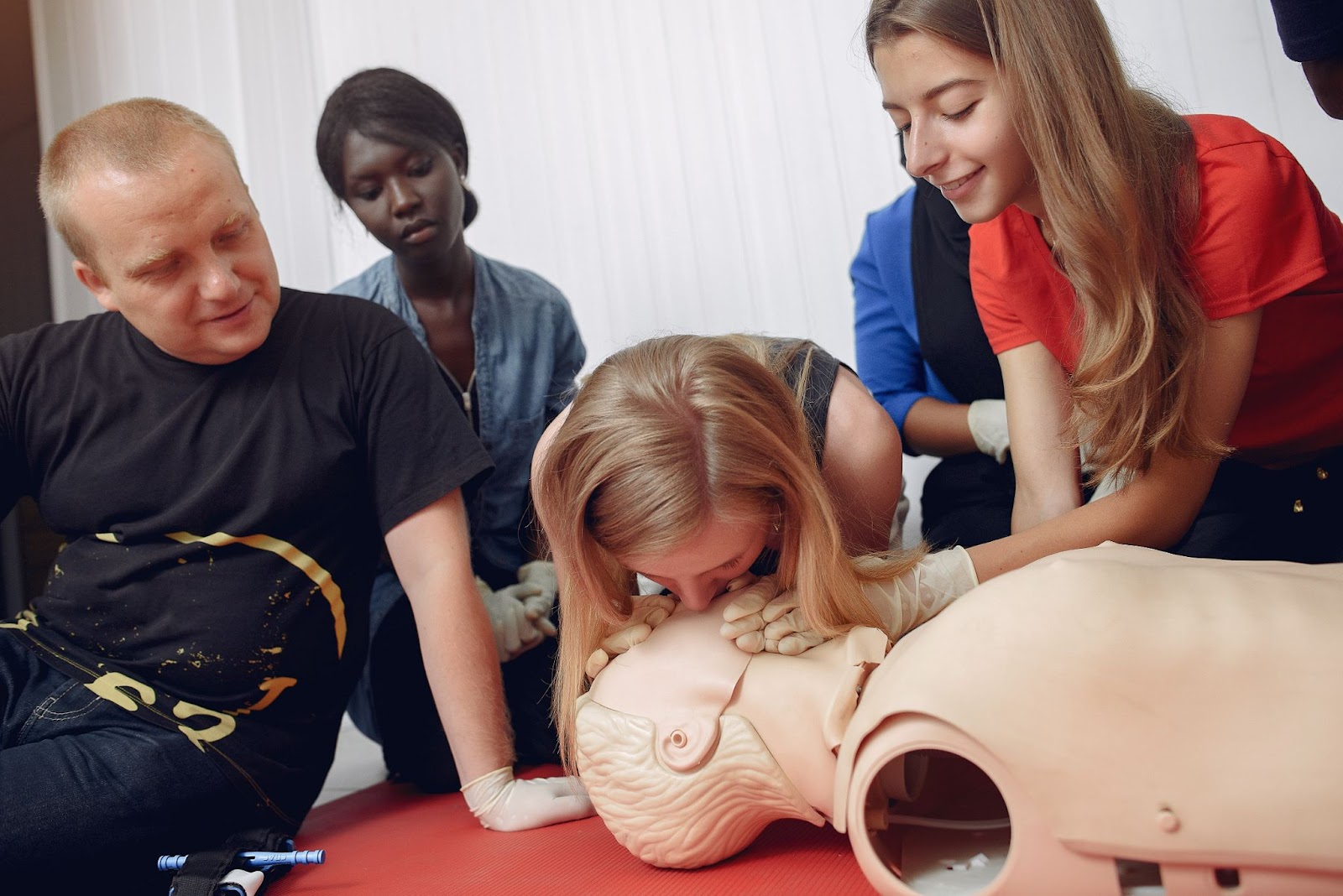Comments
- No comments found

In the ever-evolving landscape of workplace, safeguarding the well-being of employees has emerged as a non-negotiable priority.
Amidst the hustle and bustle of productivity, one facet often relegated to the background is the profound importance of first aid training. However, understanding that first aid training transcends a mere regulatory requirement unveils its pivotal role in preserving lives, mitigating injuries, and nurturing a culture of responsibility within organizational frameworks. This comprehensive exploration delves into the multi-dimensional significance of first aid training in workplaces, unearthing its multifarious benefits, best practices for its seamless integration, and real-world success stories that underscore its unassailable value.
Workplaces, regardless of their dimensions or sectors, inherently harbor a spectrum of risks and hazards. From conventional office settings to bustling industrial domains, accidents often materialize with little warning and dire consequences. These incidents reverberate beyond immediate health repercussions, cascading into operational disruptions, financial strains, legal entanglements, and potentially even tarnished organizational reputations. Therefore, the imperative of workplaces to prioritize safety and proactively counteract potential risks cannot be overstated.
Rooted in practicality, first aid training equips individuals with the proficiencies and confidence necessary to administer immediate aid to those in distress. Ranging from fundamental wound care techniques to addressing life-threatening scenarios such as cardiac arrests, first aid training empowers participants to respond swiftly and effectively during emergencies. By imparting a repertoire of skills, first aid training transforms ordinary employees into potential life-savers, bridging the gap between an incident and professional medical assistance.

At the core of first aid training lies the invaluable ability to mount an immediate response, a critical factor in the moments preceding professional medical aid. Trained employees can offer timely assistance, employing their skills to stabilize injured or unwell individuals. Such timely interventions often preclude minor injuries from spiraling into more severe conditions, ultimately diminishing the overall impact of the incident.
Beyond individual repercussions, workplace injuries wield the power to disrupt entire operational systems, resulting in unwelcome downtime. Trained staff can rapidly address injuries, subsequently curtailing the period employees remain away from their duties. This translates into a seamless continuity of operations, coupled with substantial financial savings for the organization.
Governments and regulatory bodies across various jurisdictions underscore the critical nature of workplace safety, mandating organizations to maintain a designated number of trained first aid responders. Compliance not only shields businesses from potential legal penalties but underscores an earnest commitment to employee welfare and organizational social responsibility.
Initiating first aid training sets in motion a transformative chain reaction that transcends immediate response capabilities. It sows the seeds of a culture steeped in safety, where employees recognize that their well-being is a non-negotiable concern for the organization. This bolstered sense of security fosters mutual trust, engenders loyalty, and collectively fortifies the commitment to sustaining a secure work environment.
First aid training isn't confined to the acquisition of practical skills; it's a confidence-building exercise. Employees who undergo training are imbued with a sense of empowerment, cognizant of their potential to make a tangible difference during emergencies. This newfound self-assuredness permeates beyond first aid situations, resonating positively across their broader professional roles.
Embarking on first aid training journeys necessitates teamwork, mirroring real-life emergency scenarios. This collaborative endeavor nurtures a camaraderie among employees, enhancing their connections and reinforcing a sense of unity. Additionally, as employees learn to care for their colleagues during training, they develop heightened levels of empathy, subsequently impacting their interactions within the workplace.

Laying the groundwork for a robust first aid training program entails assessing the specific nuances of the workplace. This entails identifying potential risks and hazards inherent to the industry, work processes, and physical layout.
Critical to the success of the training initiative is the selection of a suitable training program. Organizations are advised to collaborate with reputable training providers offering courses aligned with their distinct requirements. Factors such as the training level, availability of specialized modules, and teaching methodologies should all factor into the decision-making process.
Workplaces vary vastly in the risks they harbor and the injuries they are susceptible to. Tailoring training to cater to the unique needs of the work environment enhances the program's relevance and impact. For instance, a manufacturing setting might prioritize training on handling injuries caused by machinery, while an office-centric domain could focus on ergonomics and addressing stress-related ailments.
The efficacy of acquired first aid skills can erode over time if not consistently practiced and reinforced. Organizations should incorporate refresher courses into their training schedules to ensure that employees retain their competence. Regular training sessions also serve as avenues for introducing new techniques and updates based on the latest medical guidelines.
The tangible fruits of first aid training blossom vividly in the realm of real-world scenarios. Organizations across the spectrum have seamlessly integrated first aid training into their safety frameworks, reaping tangible benefits. Consider Company X, an innovative manufacturing entity, which reported a marked reduction in workplace accidents and a noteworthy dip in absenteeism after implementing a comprehensive first aid training program. These narratives serve as living testament to the pragmatic impact of investing in employee well-being.
In an era where employee safety and operational efficacy converge harmoniously, the spotlight on first aid training shines undeniably bright. By elevating the training of their workforce, organizations exude a commitment to the health, safety, and holistic quality of life of their employees. Beyond the confines of regulatory obligations, first aid training sows the seeds of a culture characterized by vigilance, teamwork, and preparedness – qualities that germinate into a thriving, harmonious work environment. A safe workplace isn't a mere contractual duty; it embodies an organization's ethos and unwavering dedication to its most invaluable asset: its human capital.
Piyush Jain is the founder and CEO of Simpalm, a React Native app development company in the USA. Piyush founded Simpalm in 2009 and has grown it to be a leading mobile and web development company in the DMV area. With a Ph.D. from Johns Hopkins and a strong background in technology and entrepreneurship, he understands how to solve problems using technology. Under his leadership, Simpalm has delivered 300+ mobile apps and web solutions to clients in startups, enterprises and the federal sector.
Leave your comments
Post comment as a guest